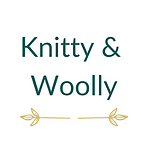

A family story
My connection to wool and knitting is first and foremost a family affair. My passion for knitting and needlework, as well as for crafts in general, is probably in my genes and was passed down by my grandmothers. As a child, I learned to knit with my paternal grandmother, my maternal grandmother was a seamstress, and my mother passed on her love of colors to me through painting.
And what about wool? It has always been part of my history.
About thirty-five years ago, my father, then a history and geography teacher, made a bold and passionate life choice: to become a farmer. Deeply attached to local heritage, he committed himself to saving the Lourdaise sheep, an emblematic breed of the Hautes-Pyrénées, which was then on the verge of extinction. As if that weren't enough, he also worked to preserve the Lourdaise cow, another local breed that was also threatened.
Alongside his teaching career, he devoted himself body and soul to breeding these unique, gentle, and hardy breeds. He even participated in a conservation program led by the Technical Institute for Sheep and Goat Breeding (ITOVIC), in collaboration with the UPRA ovine des Pyrénées centrales, to preserve the Lourdaise sheep by freezing semen—including that of a ram from his own herd.
Even today, despite these efforts, the Lourdaise remains an endangered breed, with barely 1,300 animals recorded in 2023, far from the threshold of 6,000 needed to no longer be in danger.
Looking back on all this, I can only be proud and admire the path he has taken. And grateful, too, for taking me with him on this adventure.
Since I was a little girl, I have spent a lot of time on the farm. I loved being around animals, especially sheep, which are so affectionate. When there were complicated births, I was the one who bottle-fed the lambs. I loved it!
It was only natural that my attention turned to wool. This incredible, living material, with its many virtues, deserves to be better known, recognized, and used. Today, it is at the heart of my project, like a thread connecting my Pyrenean roots and my creations.


Pastoral stories
My thoughts on the origins of wool and its processing are undeniably linked to respect for animal welfare. The breeds of sheep reared in the Hautes-Pyrénées live for several months of the year in the high mountain pastures. As a child, I used to accompany my father on the transhumance of his flock in the Hautes-Pyrénées National Park in the Marcadau valley. What unforgettable memories! They will always be engraved in my heart, so much a part of my history.
The lourdaise is also rather special in that, unlike other breeds, it feeds mainly on hay and re-growth, harvested by farmers directly in the valley, which limits the use of cereals and the environmental problems that are unfortunately sometimes associated with them.
For the rest of the year, the sheep graze in the meadows in the lower mountains, and are sheltered in the sheepfold when the weather is difficult in winter. Some flocks even live outdoors all year round. Local sheep are therefore reared in semi-liberty. They are shorn once a year by professionals who have mastered the art of shearing, a prerequisite for the animal's good health.


The challenges for the wool industry
The wool produced in France is very little and poorly valued. Before the COVID crisis in 2019, most French wool was bought from farmers by wholesalers at a derisory price, not even covering the cost of shearing, before being exported to China, where it was processed using industrial methods (with the well-known ecological and social impacts), and then returned to the European market in the form of finished products. In 2021, barely 4% of French wool was being recycled in France, according to the Tricolor collective. Worse still, even though this wool is the fruit of considerable hard work by farmers throughout the year, it is increasingly regarded as bulky waste that is difficult to dispose of. It is not uncommon for farmers to resort to burning it, for want of alternative solutions. What's more, French wool, and more widely European wool, is facing competition from wool from Merino sheep harvested in Oceania. The revival of the French wool industry therefore represents a solution for the future to relocate wool production and processing, highlight the different wools from our regions and revive ancestral know-how.






.png)

.png)